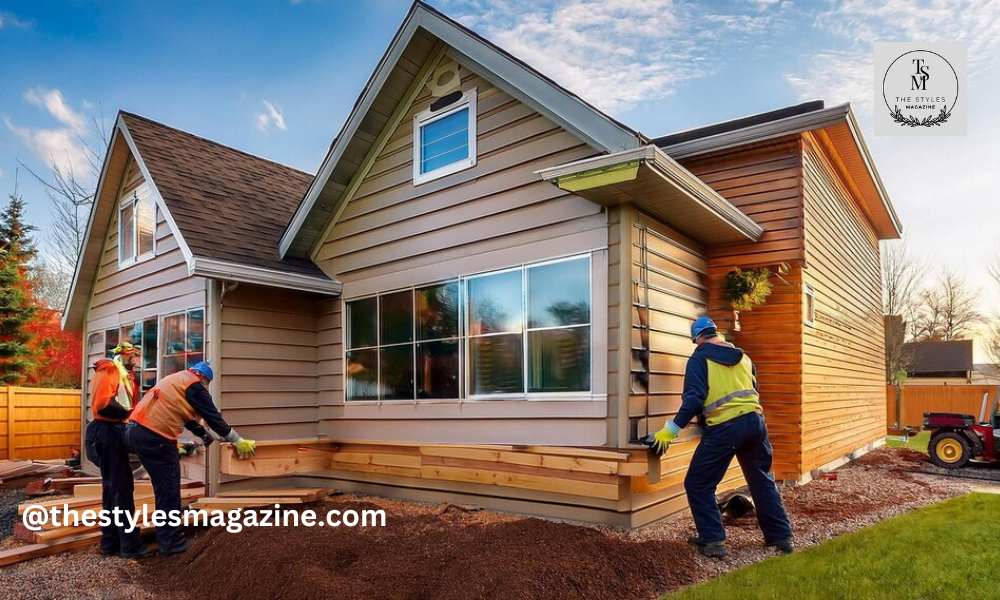Siding is essential in protecting homes from the elements while enhancing the aesthetic appeal. Professional siding services offer homeowners durable, weather-resistant solutions that shield homes from various environmental factors, such as rain, snow, wind, and UV rays. Given the unpredictability of weather conditions in different regions, selecting the right siding material and installation method is crucial to maintaining a long-lasting, resilient exterior. We will explore how siding services create a weather-resistant home, focusing on material selection, installation quality, and long-term maintenance.
Choosing The Right Siding Material
The durability and weather resistance of your home’s exterior largely depend on the type of siding material you select. Different siding materials offer varying degrees of protection, and homeowners must choose wisely based on their region’s climate. Vinyl siding is a popular option due to its affordability and low-maintenance nature. It can withstand moisture, making it an excellent choice for areas that experience heavy rain or humidity. However, its lightweight structure may not perform well in regions prone to severe winds or hailstorms.
Fiber cement siding, on the other hand, offers enhanced durability. Made from a mixture of cement, sand, and cellulose fibers, this material can resist extreme weather conditions such as harsh winds, heavy rains, and fluctuating temperatures. Fiber cement siding is less likely to crack or warp and is ideal for areas prone to fluctuating climates. Wood siding offers a traditional aesthetic but may not hold up as well in moisture-prone areas without proper treatment and sealing. Metal siding, including aluminum and steel, provides excellent weather resistance, particularly against high winds and storms. Each material has strengths and weaknesses, and consulting a professional siding service is key to selecting the most suitable option based on your environment and needs.
Proper Installation And Weather Protection
The quality of installation is just as critical as material selection in ensuring that your siding provides optimal protection against the weather. Even the most durable siding materials can only perform well if installed correctly. See Lifetime Exteriors professional siding services to ensure that every piece is securely affixed and aligned to minimize the risk of water infiltration, wind damage, or structural issues. For example, gaps between siding panels, uneven alignment, or improperly sealed edges can allow water to seep into the walls, leading to mold, rot, and structural decay over time. Additionally, poorly installed siding may become loose or detached during extreme weather events such as storms or hurricanes.
A professional installer will also consider insulation needs, ensuring that the siding contributes to your home’s energy efficiency while providing weather protection. Many siding materials today come with added insulation layers that enhance thermal performance, helping to maintain comfortable indoor temperatures regardless of external weather conditions. Professional installation can also include weather-resistant barriers, moisture control systems, and proper caulking to enhance further the siding’s ability to withstand the elements. This meticulous approach to installation helps create a seamless, secure exterior that resists moisture, wind, and other environmental stressors.
Maintenance For Long-Term Weather Resistance
Even after selecting the right siding material and ensuring professional installation, ongoing maintenance plays a vital role in preserving the weather resistance of your home’s exterior. While some siding materials, such as vinyl and fiber cement, require minimal upkeep, they still benefit from regular cleaning and inspections. For instance, vinyl siding may accumulate dirt, mold, or mildew over time, especially in humid environments. Washing it with a mild detergent and water can help maintain its appearance and prevent potential degradation. Though highly durable, fiber cement siding should be checked periodically for cracks or chips that may compromise its integrity.
Repainting every few years may also be necessary to keep it looking fresh and resilient against weather damage. Wood siding, being more susceptible to moisture, requires more rigorous maintenance, including regular sealing, painting, and inspections for termites or rot. Homeowners should also inspect their siding after major storms or extreme weather events to address any damage immediately. Loose panels, cracked siding, or gaps should be repaired promptly to avoid long-term issues such as water infiltration or mold growth. With routine maintenance and timely repairs, your siding will continue to provide effective protection from the weather for many years.
Siding protects homes from the elements and ensures long-term weather resistance. By selecting the right siding material, ensuring proper installation, and maintaining the siding over time, homeowners can safeguard their property against harsh weather conditions. Professional siding services offer valuable guidance and expertise in choosing the most suitable options for each home’s unique needs. Also, siding enhances energy efficiency and can contribute to a home’s sustainability efforts.
Thank you for exploring our Blog! For additional captivating content, feel free to explore the corresponding category.
Bringing The Outdoors In: Biophilic Design Ideas For Your Home

